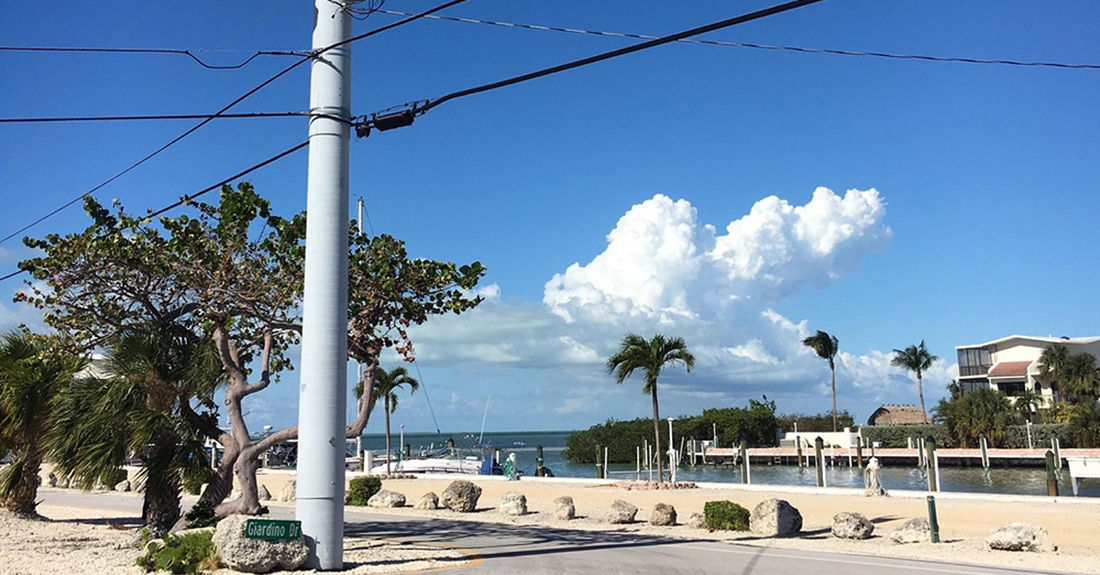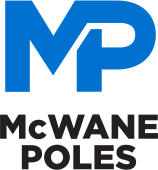
Coastal regions present unique challenges for infrastructure, particularly for utility poles that support electrical grids and communication networks. The harsh conditions, including saltwater exposure, high winds, and extreme weather events, demand materials that can withstand adversities. Selecting the right utility pole material helps with the reliability, safety, and longevity of power distribution systems in these areas.
Ductile iron poles have emerged as a superior choice, offering numerous advantages over traditional materials like wood and steel. The benefits of ductile iron poles for coastal environments include corrosion resistance, resilience, economic value, and environmental sustainability. Let’s explore these benefits in more detail.
The Challenges of Coastal Environments for Utility Poles
Utility poles in coastal regions encounter a range of environmental stressors that can degrade their performance and lifespan. Addressing challenges requires selecting materials that can endure and perform reliably under such conditions.
Corrosion From Saltwater and Salty Air
Saltwater and salty air accelerate corrosion, severely impacting traditional utility pole materials. Steel poles rust quickly when exposed to saline environments, weakening their structural strength and increasing maintenance costs. Wooden poles absorb moisture and salt, making them susceptible to rot, insect infestations, and structural decay.
Corrosion reduces the lifespan of the poles and poses significant safety risks, including potential pole failure during severe weather events. Utility companies must prioritize corrosion-resistant materials to maintain the reliability and safety of their infrastructure in coastal communities.
Exposure to Extreme Weather Conditions
Coastal regions frequently experience extreme weather conditions such as hurricanes, tropical storms, and high winds. Extreme weather events exert substantial forces on utility poles, demanding materials that can withstand bending, twisting, and impact without breaking.
Wooden poles may snap under intense wind pressures, while corroded steel poles might bend or collapse. Pole failures during storms lead to widespread power outages, emergencies, and costly repairs. Utility poles that can endure intense forces keep up with power supply demands and improve public safety during adverse weather conditions.
Advantages of Ductile Iron Poles in Coastal Settings
Some notable benefits of ductile iron poles for coastal environments are their superior corrosion resistance and ability to endure extreme weather conditions. Iron poles combine strength, flexibility, and durability, outperforming traditional materials in challenging coastal settings.
Superior Corrosion Resistance
Ductile iron poles exhibit outstanding corrosion resistance, a critical advantage in salty coastal air and saltwater exposure. Ductile iron forms a protective oxide layer that significantly reduces the impact of atmospheric corrosion.
Additionally, metalized zinc can be applied to the exterior surface of ductile iron poles, enhancing their resistance to corrosive elements. Superior corrosion resistance significantly extends the lifespan of the poles, reducing the need for frequent maintenance and replacements. Utility companies benefit from greater reliability and lower long-term costs by investing in ductile iron poles.
Superior Strength and Durability
Ductile iron possesses remarkable strength and flexibility, allowing poles to withstand substantial mechanical stress without failure. This material can absorb and dissipate energy from high winds and impacts resulting in a resilient product.
The inherent flexibility of ductile iron poles enables them to bend rather than snap under extreme forces, maintaining their structural integrity during severe weather events. This resilience ensures that utility poles remain functional and safe, even in the face of powerful storms and high winds, thereby minimizing power outages and enhancing public safety.
Economic and Environmental Benefits
The advantages of ductile iron poles for coastal environments extend beyond structural advantages, encompassing significant economic savings and environmental sustainability.
Long-Term Cost Savings
Investing in ductile iron poles leads to substantial long-term cost savings for utility companies and municipalities. Although the initial cost of ductile iron poles may be higher than that of wood, their extended lifespan and reduced maintenance requirements offset the upfront expenses.
Ductile iron poles require fewer inspections, repairs, and replacements, resulting in lower operational costs over time. Additionally, the reliability of poles reduces the frequency and duration of power outages, minimizing economic losses and enhancing customer satisfaction. The long-term financial benefits make ductile iron poles a cost-effective solution for coastal infrastructure.
Environmental Sustainability
Ductile iron poles contribute to environmental sustainability through their recyclability and lower environmental impact. The production of ductile iron often incorporates recycled materials, reducing the need for virgin resources and minimizing waste. Recycling and repurposing ductile iron poles at the end of their service life decreases landfill waste and conserves natural resources.
Recyclability aligns with green infrastructure initiatives and regulatory requirements aimed at reducing environmental footprints. By choosing ductile iron poles, utility companies support sustainable practices and demonstrate a commitment to environmental stewardship.
Implementing Ductile Iron Poles in Coastal Projects
Adopting ductile iron poles for coastal infrastructure requires more than selecting the right material—it involves a well-coordinated approach to installation, environmental adaptation, and maintenance planning. Proper foundations tailored to coastal conditions, applying corrosion-resistant treatments, and using optimal installation methods maximize the durability and effectiveness of ductile iron poles.
Teams must also account for site-specific factors, such as soil composition, wind speeds, and exposure to saltwater, to guarantee stability and performance. Considering these elements in the implementation process ensures that ductile iron poles deliver lasting benefits in the demanding conditions of coastal regions.
Installation Best Practices
Proper installation maximizes the performance and longevity of ductile iron poles in coastal environments. Burial depth is notably important. McWane Poles applies PermaSafe™ 100, a high-quality ceramic-epoxy protective coating from one foot above the ground line, or higher if specified by the utility, down to the base of the pole, on the inside and outside of the pole. This protects the embed portion of the poles from harsh environmental conditions.
Adhering to manufacturer guidelines and industry standards during installation procedures promotes optimal performance and safety. Additionally, conducting regular inspections helps identify and address potential issues before they escalate, ensuring that ductile iron poles continue to perform reliably over time.
Partnering With Industry Experts
Partnering with industry experts guarantees access to high-quality materials and professional support to facilitate the successful deployment of durable, reliable utility poles in coastal regions. Collaborating with experienced providers like McWane Poles, a leader in power pole alternatives, enhances the implementation process.
McWane Poles offers specialized knowledge in ductile iron technology, providing valuable guidance on product selection, engineering support, and installation services tailored to coastal projects. Our expertise helps utility companies and municipalities optimize their infrastructure investments by selecting the most suitable ductile iron poles for their environmental conditions.
The benefits of ductile iron poles for coastal environments include exceptional corrosion resistance, superior strength, and long-term economic and environmental advantages. Ductile iron poles are durable, cost-effective, and environmentally responsible solutions for coastal infrastructure needs.

